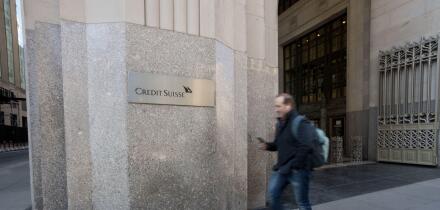Credit Suisse First Bostonis recommending a trade in which investors can take advantage of the wide differential between Nasdaq 100 and S&P 500 longer-dated implied volatilities.
Two-year implied vol on the Nasdaq-100 was last week near all-time highs, at around 45.7%, but the tumult in tech stocks over the last several years is largely played out, said Mika Toikka, director, global head of equity derivatives strategy in New York. The tech stock boom appears to be over, as does the most eye-popping part of the downturn, he added. While there will be selling pressure on tech companies over the next several quarters, a dramatic sell-off similar to what the market has seen over the last six months is unlikely.
The bank recommends entering a vol swap on the differential between the Nasdaq and the S&P, where the investor receives a payout if the realized vol in two years is less than about 21%, the approximate differential last week between the at-the-money forward two-year implied volatilities on the indices. The investor profits here if in two years, the realized two-year vol for the Nasdaq has fallen relative to the equivalent vol on the S&P.
It might make sense just to sell Nasdaq vol, said Toikka, but it's better to put on a relative value trade with the Nasdaq and S&P to help reduce the volatility beta in the Nasdaq position. In other words, if there is a total market meltdown, tech stocks and the market as a whole will see higher implied vols. But vol on the S&P 500, which represents stocks in a broader array of sectors, is likely to increase substantially, while vol on the Nasdaq is already close to all-time highs. A relative value trade where the investor takes a view on the differential between the realized volatility in two years time on the two indices allows the investor to profit from a fall in Nasdaq vol relative to the S&P.
The two-year sector is a good place to look at this differential, said Toikka. Two years is enough time for the current market turmoil, particularly in the technology sector, to play itself out, and the differential between two-year implied vols, at about 22% last week, is near all-time high levels. Since 1990, the realized vol differential has tended to be closer to 10.7% over long periods of time.
Toikka noted that there are other means of putting on this trade, such as selling two-year at-the-money forward straddles on Nasdaq vol and buying two-year at-the-money forward straddles on S&P vol.





